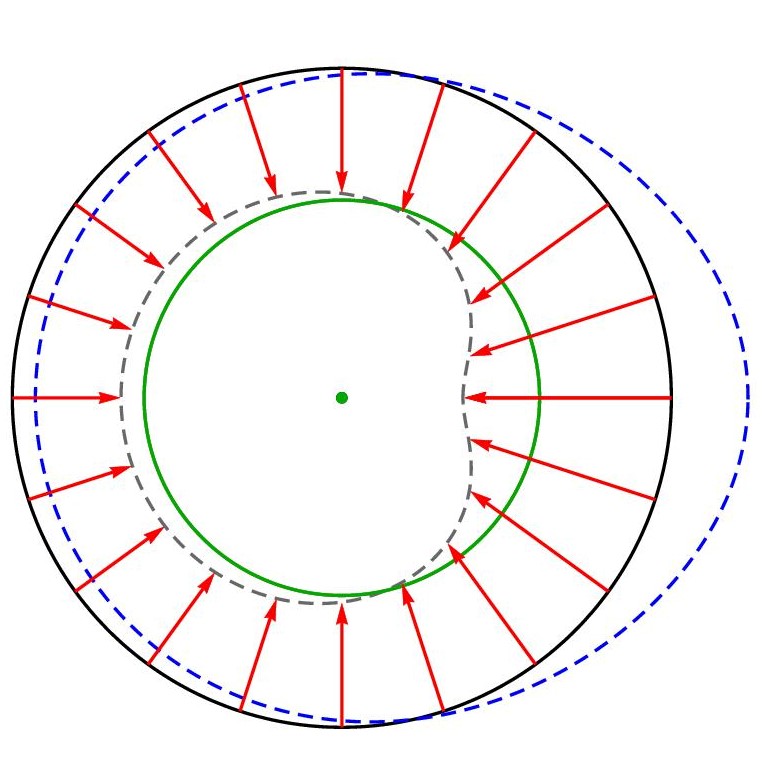 [source] Live cells exert contractile forces, which result in elastic deformations of their environment. Cells in live tissue measure the resultant forces and displacements created on their surfaces by neighboring cells and in response correct their own forces in some preprogrammed way. To analytically calculate the interaction energy between live cells we model them as spheres surrounded by infinite material with linear elastic behavior. Each sphere in our model creates a radial deformation on its surface. If each sphere generates an isotropic displacement, the interaction energy vanishes. Thus to model real cells
[source] Live cells exert contractile forces, which result in elastic deformations of their environment. Cells in live tissue measure the resultant forces and displacements created on their surfaces by neighboring cells and in response correct their own forces in some preprogrammed way. To analytically calculate the interaction energy between live cells we model them as spheres surrounded by infinite material with linear elastic behavior. Each sphere in our model creates a radial deformation on its surface. If each sphere generates an isotropic displacement, the interaction energy vanishes. Thus to model real cells
we consider live spheres that respond to the changes in their environment by exerting anisotropic forces or displacements along their surface that will allow preservation of their initial shape by cancellation of the distortions created by the neighbor cells.
In addition to shape regulation, our general solution for the interaction energy between two such live spheres includes two additional ingredients. One is responsible for size preservation, and the other for position regulation. Each of these may be included or excluded, resulting in different types of self-regulation behavior of the cells. We use this to show that cells regulating the forces that they apply are attracted, and that cells regulating their displacements are repelled. The sign of the interaction, as well as the scaling with distance are consistent with our simpler effective field theory, which replaces the neighboring cell with a boundary condition of vanishing displacement at some distance from the cell.
Response of adherent cells to mechanical perturbations of the surrounding matrix
D. Ben-Yaakov, R. Golkov, Y. Shokef, and S.A. Safran
Soft Matter 11, 1412 (2015)
Shape regulation generates elastic interaction between active force dipoles
R. Golkov and Y. Shokef
New Journal of Physics 19, 063011 (2017)
Elastic interactions between anisotropically contracting circular cells
R. Golkov and Y. Shokef
Physical Review E 99, 032418 (2019)
